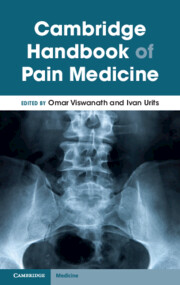Book contents
- Cambridge Handbook of Pain Medicine
- Cambridge Handbook of Pain Medicine
- Copyright page
- Contents
- Contributors
- Pain Handbook Introduction
- Part I Introduction to Pain: Pain Signaling Pathways
- Chapter 1 Central Neuropathic Pain Signaling Pathways
- Chapter 2 Cannabinoids Pain Signaling Pathways
- Chapter 3 The Microbiome and Chronic Pain Syndromes
- Part II Common Categories of Pharmacologic Medications to Treat Chronic Pain
- Part III Chronic Pain Conditions Head and Neck
- Part IV Spine
- Part V Extremities
- Part VI Misc
- Part VII Adjunctive Therapy
- Index
- References
Chapter 3 - The Microbiome and Chronic Pain Syndromes
from Part I - Introduction to Pain: Pain Signaling Pathways
Published online by Cambridge University Press: 01 December 2023
- Cambridge Handbook of Pain Medicine
- Cambridge Handbook of Pain Medicine
- Copyright page
- Contents
- Contributors
- Pain Handbook Introduction
- Part I Introduction to Pain: Pain Signaling Pathways
- Chapter 1 Central Neuropathic Pain Signaling Pathways
- Chapter 2 Cannabinoids Pain Signaling Pathways
- Chapter 3 The Microbiome and Chronic Pain Syndromes
- Part II Common Categories of Pharmacologic Medications to Treat Chronic Pain
- Part III Chronic Pain Conditions Head and Neck
- Part IV Spine
- Part V Extremities
- Part VI Misc
- Part VII Adjunctive Therapy
- Index
- References
Summary
The gut microbiome is the community of organisms that occupies the humangastrointestinal tract. The human microbiome consists of approximately 1014 microbes, including bacteria, bacteriophages, archaea, eukaryotic viruses, fungi, and protozoa. The microbiome is influenced by genetic and environmental factors, most clearly diet. Microbiome research is becoming increasingly robust as the microbiome becomes increasingly linked with various disease states and potential therapies. The majority of research to date has focused on exploring the role of microbiota and dysbiosis in various autoimmune disorders, but interest has grown in their interplay with chronic pain disorders. The microbiome has primarily been linked to human disorders through modulation of inflammatory pathways. Most studies have taken place in animal models, introducing the challenge of translating this research to human interventional models. Pre/probiotics, fermented foods, dietary fiber, NAIOSs, fecal transplants, and novel therapies have been proposed to treat dysbiosis. Further investigation of the link between the microbiome and nociception may help with diagnosis and management of conditions like OA, fibromyalgia, and neuropathic pain.
- Type
- Chapter
- Information
- Cambridge Handbook of Pain Medicine , pp. 26 - 38Publisher: Cambridge University PressPrint publication year: 2023



